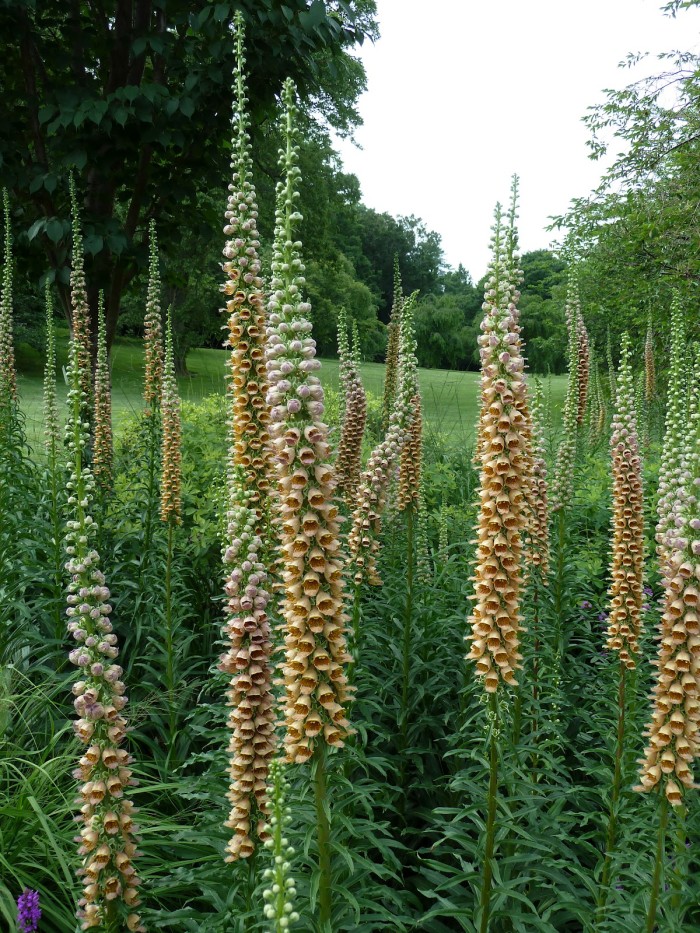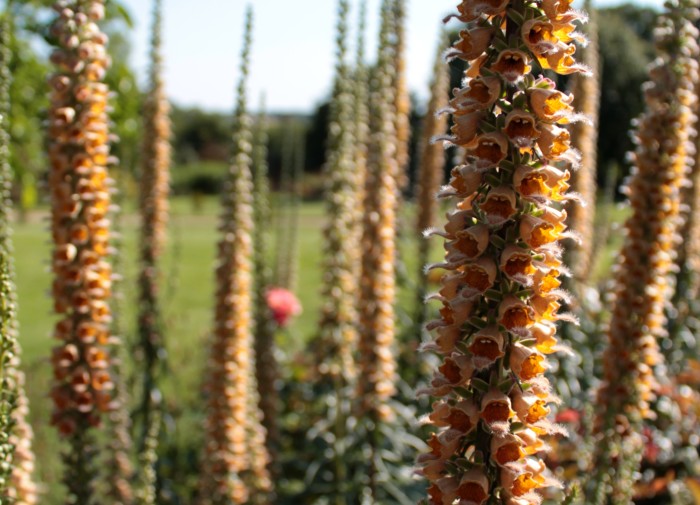
Long after other Digitalis have taken the summer off for vacation, the rusty foxglove or Digitalis ferruginea is flowering during the warm days of July and August here in New England.
This tall, slender foxglove is from Mediterranean regions of southeastern Europe. Depending on its growing conditions, it can behave as a perennial or self-sowing biennial. If the climate is mild and soils are perfect, they have a tendency to self seed themselves in the garden. Perfect soils are those that are fertile with adequate moisture. Rusty foxglove will oxidize itself to a prolonged death in soils that are too wet or too dry.
Rusty Foxglove gets its common name from the reddish coloration of the small but numerous flowers.
Our flowers are a warm beige with the reddish-brown veins. The individual flowers are much smaller than the common foxglove. Each flower is one-half to one inch in width to around an inch and a half in length. Because the flowers are smaller, they are much more numerous on the 4 to 5 feet tall flowering stalks. Hundreds of flowers cover each stiff stalk and they make a great complement the middle to back of the mixed flower border. They are also a surprising addition to cut flower bouquet.
Bees absolutely love the rusty foxglove but it is humorous to watch them climb inside of the flowers to gain nectar. The flower tubes are almost too narrow for the bees. Watching the bees reminds me of having to suck in your belly when trying to slide behind your cousins at the Thanksgiving table, as you shimmy to the desert table for a piece of pie that you really should not eat.
Digitalis and foxglove growing tip:
If the main stalk is cut back after flowering, it will produce multiple flowering side stalks which can prolong the flowering time and make a wider plant. This characteristic has me wondering what might happen if the interesting Digiplexis cross is recreated with Digitalis ferruginea and Isoplexis canariensis.

As with all Digitalis species, take care with the plants as they may be somewhat toxic if ingested. Make sure that you site the plants where they are out of reach from those who may not know better.
Have you tried the rusty foxglove? This species has me wanting to try other members of the genus in the gardens.
-Rodney
Love Foxgloves – Enjoy these posts:
Images: Josh Coceano, The Sproutling Writes
Very interesting color they have ! I’m sure anyone can make some room in the garden for a few of these.